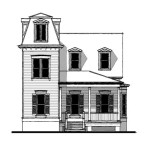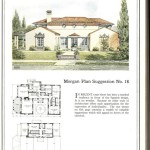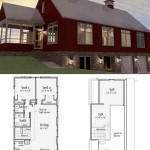How To Get Original Floor Plans For My House
Obtaining the original floor plans for a house can be crucial for homeowners planning renovations, additions, or even simply understanding the structural integrity of their property. These plans offer a detailed layout of the building, including dimensions, wall placements, plumbing lines, electrical wiring, and other essential information. Locating these plans, however, can sometimes be a challenging task, requiring a systematic approach and resourcefulness. This article outlines various strategies to effectively track down the original floor plans of a house.
Checking Existing Records and Personal Archives
The first step in locating floor plans should involve a thorough search of the homeowner's existing records and personal archives. These documents may have been passed down through previous owners or generated during previous renovations or modifications. Reviewing these resources meticulously can often yield the desired plans or, at the very least, provide clues as to their whereabouts.
Start by examining any documents received at the time of purchase. Mortgage documents, title deeds, and insurance policies sometimes include a basic floor plan or reference architectural plans. These plans may not be as detailed as original blueprints, but they can serve as a starting point. Furthermore, scrutinize any historical records associated with the property, such as renovation permits, building permits, or property tax assessments. These records often require the submission of floor plans as part of the application process.
Investigate personal archives, including files, folders, and storage spaces. Previous homeowners may have kept records related to the house, even if they no longer live there. Contacting previous owners, if possible, can be a valuable avenue for acquiring these documents. They may have retained copies of the original plans or know where they might be stored. Estate sales or online auctions of items from the home's previous occupants could also yield these documents, particularly if the estate includes historical papers or architectural drawings.
Do not overlook physical searches within the property itself. Hidden compartments, attics, basements, and crawl spaces can sometimes hold forgotten documents. Architectural plans are likely to be stored in areas protected from moisture and pests. Check behind old photographs, inside picture frames, or within built-in furniture, as these locations may have been used for safekeeping. It is crucial to exercise caution when exploring these areas, especially in older homes that may contain hazardous materials like asbestos or lead paint.
Contacting Local Government Agencies
If personal records prove fruitless, the next step involves contacting local government agencies. Municipalities typically maintain records of building permits, construction plans, and property assessments. These records are often accessible to the public, although access procedures may vary depending on the jurisdiction. Agencies to consider include the building department, planning department, and county recorder's office.
The building department is a primary source for architectural plans. When a house is built or undergoes significant renovations, contractors are usually required to submit detailed plans to the building department for approval. These plans are then archived and can be accessed by homeowners or their authorized representatives. Contact the building department and inquire about the process for retrieving archived plans. Be prepared to provide the property address, the dates of construction or renovation, and any other relevant information that can help locate the specific plans.
The planning department may also possess floor plans, especially if the property is located within a historic district or has undergone zoning changes. Historic preservation offices often maintain detailed records of historic properties, including architectural drawings and photographs. Similarly, zoning departments may have plans showing the property's compliance with zoning regulations. Contacting these departments can provide access to plans related to land use and development.
The county recorder's office is responsible for maintaining property records, including deeds, mortgages, and other legal documents. While the recorder's office may not directly hold floor plans, they might have references to architectural plans or related documents. Searching the property's recorded documents can sometimes lead to the discovery of plans or information about where they can be found. Accessing these records typically requires a visit to the county recorder's office or accessing their online database, if available.
When contacting local government agencies, be prepared to pay a fee for document retrieval. The fees vary depending on the agency and the complexity of the request. Some agencies may require a written request or an in-person visit to access the records. It is also essential to verify the authenticity of any plans obtained from government agencies, as they may not always be up-to-date or accurate.
Engaging Professionals: Architects, Contractors, and Historical Societies
If the previous methods fail to yield the original floor plans, consider engaging professionals who specialize in architecture, construction, or historical research. These professionals possess the expertise and resources to locate or recreate the desired plans.
Architects can be invaluable in locating or recreating floor plans. Architects specializing in residential architecture or historical preservation often have access to databases and archives of architectural drawings. They can also conduct research to identify the original architect or builder of the house, which may lead to the discovery of the plans. If the original plans cannot be found, an architect can create new plans based on existing conditions. This process involves measuring the house, documenting its features, and creating a set of accurate drawings. While recreating plans can be costly, it ensures that the homeowner has a reliable and up-to-date representation of the property.
Contractors, particularly those specializing in renovations or historical restorations, may have encountered the house during previous projects or have knowledge of where the plans might be stored. Local contractors often work closely with building departments and may have access to archived plans. Engaging a contractor with experience in similar properties can be particularly helpful, as they may have encountered the house before and have insights into its construction history. Additionally, contractors can assist in verifying the accuracy of existing plans and identifying any discrepancies between the plans and the actual structure.
Historical societies and preservation organizations are valuable resources for historical research. These organizations often maintain archives of historical documents, photographs, and architectural drawings. They may have information about the house's architectural style, its original builder, and any significant renovations or alterations. Contacting local historical societies or preservation organizations can provide access to these resources and potentially lead to the discovery of the original floor plans. Furthermore, these organizations can provide insights into the property's history and its significance within the community.
When engaging professionals, it is crucial to verify their credentials and experience. Check their professional licenses, certifications, and references to ensure that they have the qualifications to assist in locating or recreating the floor plans. Request a detailed proposal outlining the scope of work, the estimated cost, and the timeline for completion. It is also essential to have a written contract that clearly defines the responsibilities of both parties.
In conclusion, obtaining the original floor plans for a house requires a multifaceted approach that involves searching personal records, contacting local government agencies, and engaging professionals. By methodically pursuing these strategies, homeowners can increase their chances of locating the desired plans and gaining a comprehensive understanding of their property's structure and history.

How To Find The Original Floor Plans For Your House

How To Get Blueprints Of Your House

Cur And Future House Floor Plans But I Could Use Your Input Addicted 2 Decorating

Make Your Dream House Floor Plans By Architect Rehan Fiverr

Site Plans What They Are And How To Create One

House Plans Home Floor Architecturalhouseplans Com

House Plans How To Design Your Home Plan

House Plans The Best Floor Home Designs Abhp

House Plans The Best Floor Home Designs Abhp

How To Read A Floor Plan And Design The Perfect Home For You
Related Posts








